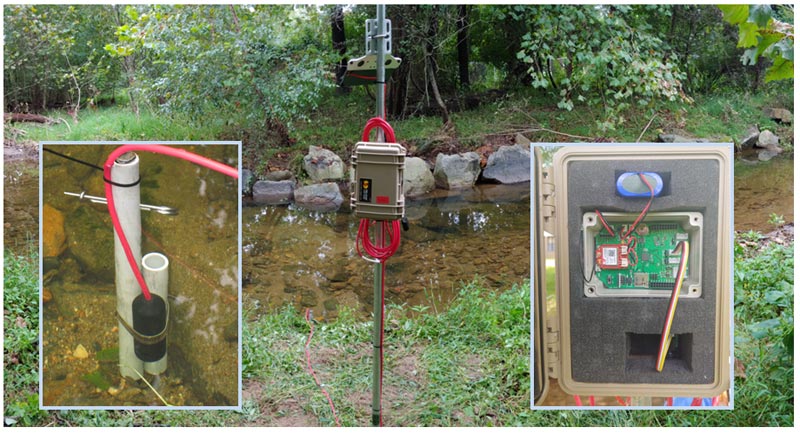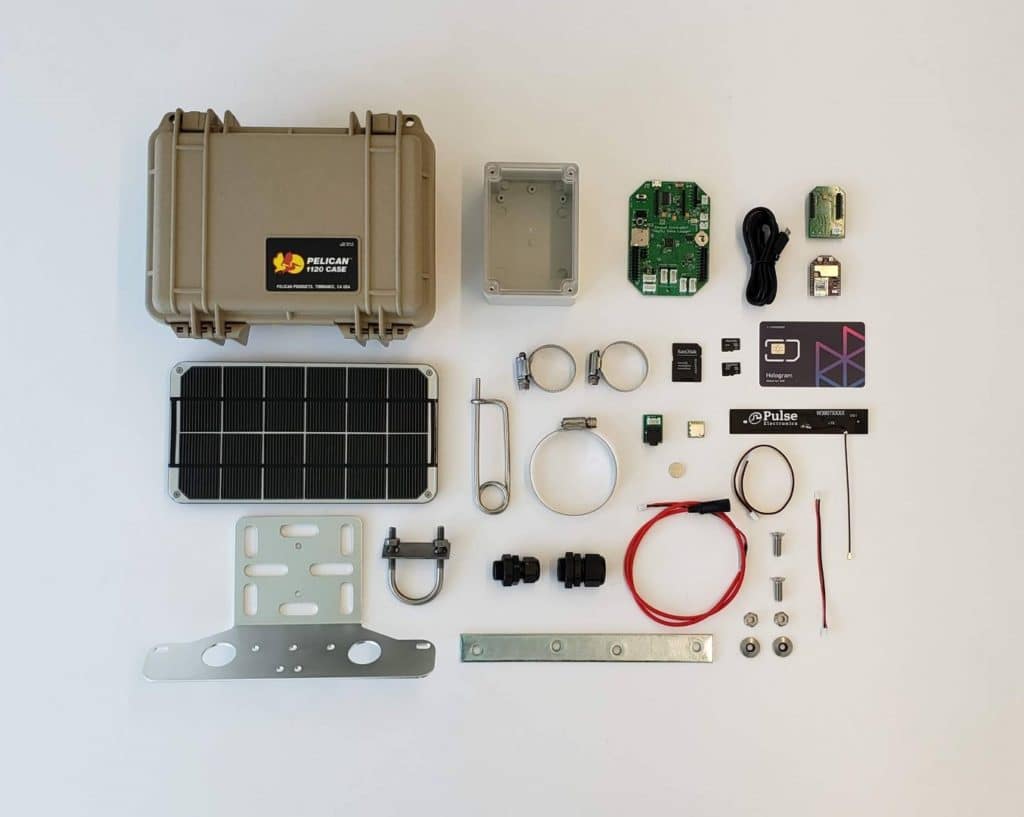If you are a newcomer to EnviroDIY without programming experience, you may have struggled up the learning curve to reach that satisfying moment when your data logger gives you your first measurement from a sensor. While the EnviroDIY community and our online resources are there to help you along, we’ve also been working hard to develop hands-on workshops to get you there faster.
Over 500 people across the country have participated in these workshops over the last five years, but we recently developed our most comprehensive workshop yet to reach more people and provide comprehensive step-by-step guidance.
In May 2020 we hosted our first online workshop to teach participants to program and assemble an EnviroDIY Monitoring Station, complete with Mayfly data logger, Meter Hydros 21 CTD sensor, waterproof logger box, solar panel, battery, and LTE (4G) cellular capacity (Figure 1).
Read on to learn how you can benefit from this do-it-together workshop and learn about some useful new products and resources at EnviroDIY.org.

This was the first workshop of its kind in which attendees were guided through the entire process of assembling, programming, and installing an EnviroDIY monitoring station from start to finish. We faced some challenges transitioning our historic in-person approach to virtual, but we solved these and ultimately the online format has served as a catalyst for building a workshop and assembling guidance materials that are accessible to a broader audience.
To make it easier for participants to get started building an EnviroDIY Monitoring Station, we sent participants a kit (Figure 2) that included all the necessary components (except for site-specific installation supplies).

Next, attendees purchased the Meter Hydros 21 CTD sensor directly from Meter Group, activated Hologram.io cellular accounts, configured software on their computers, and established personal EnviroDIY.org and Monitor My Watershed accounts.
Leading up to the workshop several informal online group sessions were conducted with attendees to review basic technology questions and troubleshooting. Although the advance preparation and additional meetings took extra time and energy, it was worth the effort to ensure participants were comfortable, prepared, and at ease with the Zoom platform.
When the workshop finally began attendees already knew each other because of the prior informal meetings and Stroud Water Research Center facilitators understood attendee skill levels and the roles that they would be playing in the workshop, in station management, and in technical maintenance. The workshop was divided into several sessions with breaks and question periods in between.
The sessions were led by Shannon Hicks, Stroud Center’s research engineer. Expert situational guidance was provided by Research Engineer Technician Rachel Johnson and the workshop was facilitated by David Bressler, Stroud Center’s citizen science facilitator. Scott Ensign, assistant director at the Stroud Center, provided key oversight of the event and Tara Muenz, assistant director of education, conducted pre- and post-workshop evaluations which are guiding our development of future virtual workshops.
After completing the workshop attendees left with functional EnviroDIY Monitoring Stations ready to collect and transmit data to the Monitor My Watershed data portal.
The workshop touched briefly on the station installation process, but attendees used the EnviroDIY Monitoring Station manual and installation videos to fine tune their knowledge and install their station(s) independently. Attendees that needed further guidance on the installation process were assisted by Christa Reeves, Stroud Center’s regional technician, who met groups in the field to provide additional hands-on guidance.
You can benefit from this do-it-together workshop by following along step-by-step! The workshop recording is available on the EnviroDIY videos page, and you can purchase your own EnviroDIY Monitoring Station Kit on the EnviroDIY shop (just remember you need to purchase your sensor and a battery independently). We’ve also updated the online EnviroDIY Monitoring Station manual, a great companion to watching the step-by-step videos.
If you are interested in hosting an in-person or virtual do-it-together EnviroDIY workshop, please email Scott Ensign or David Bressler!
If you participated in this or any of our previous in-person EnviroDIY workshops, we’d love to hear from you. Please feel free to leave a comment below. Or if you have a bit more time please provide detailed feedback on any/all of the aforementioned guidance materials and resources, as well as the workshop itself. What was useful? What could be more fully developed? What was challenging?
Please use this as an opportunity to contribute to the growing body of EnviroDIY resources by providing your own perspective and feedback on these resources!

 Welcome to EnviroDIY, a community for do-it-yourself environmental science and monitoring. EnviroDIY is part of
Welcome to EnviroDIY, a community for do-it-yourself environmental science and monitoring. EnviroDIY is part of